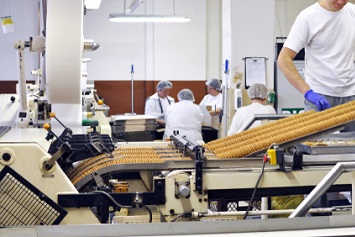On August 19, the Occupational Safety and Health Administration (OSHA) and Food and Drug Administration (FDA) announced the release of a checklist for food manufacturers that are continuing, resuming, or reevaluating operations during the ongoing coronavirus disease 2019 (COVID-19) pandemic. The checklist covers ensuring safe workplaces, investigating exposures and testing for coronavirus infections, and configuring work environments to minimize the risk of spreading COVID-19.
COVID-19 is a respiratory illness caused by the SARS-CoV-2 virus. COVID-19 currently is widespread in most U.S. communities and considered a workplace hazard.
Although there is no evidence of COVID-19 transmission through food or food packaging, the checklist also contains a section on food safety.
The checklist supplements earlier guidance from OSHA and the Centers for Disease Control and Prevention (CDC) for agricultural operations and meat and poultry processing facilities. The checklist is intended for animal and human food operations regulated by the FDA.
Some or all of the checklist may be applicable to operations growing, harvesting, packing, manufacturing, processing, or holding human and animal food regulated by the FDA.
Some food operations in foreign countries that manufacture, process, pack, or hold food for consumption in the United States are subject to FDA regulations but are not subject to OSHA requirements. However, foreign facilities may find the checklist useful, according to the FDA.
The checklist encourages employers to have a COVID-19 assessment and control plan and designate a qualified coordinator for developing and administering the plan. The coordinator can act as a point of contact for employees reporting symptoms or illness and ensure that employees who have been sick with COVID-19 meet the CDC criteria for ending a period of home isolation.
Employers also should maintain communications with local public health officials to ensure they get relevant and up-to-date information concerning COVID-19. They also should take steps following temporary shutdowns to ensure facilities are free of mold and water systems are free of Legionella bacteria.
The checklist also instructs employers to provide all communications and information in languages and at the literacy levels that employees understand. Employers also should ensure that facilities have hand-washing stations and materials (soap and paper towels) or hand sanitizer with at least 60% alcohol and trash receptacles (preferably no-touch) so employees can follow CDC and OSHA hand-washing protocols.
Employers also are instructed to increase the scope and frequency of cleaning and disinfecting of frequently touched surfaces such as control panels, door handles, faucets, handles on refrigerators and microwave ovens in break rooms, time clocks, and vending machine touchpads using disinfectants on the EPA’s List N as effective against SARS-CoV-2.
The checklist recommends that all employees wear cloth face coverings and that employers perform assessments of whether personal protective equipment, including respirators, is necessary. The checklist contains guidelines for work space configuration and social distancing during agricultural operations, including weeding and harvesting. Employers should ensure that workers remain at least 6 feet apart or that partitions are installed where 6-foot social distancing is impractical.
The checklist reminds employers that infection prevention measures also should be maintained in communal or shared housing provided for seasonal farmworkers.

